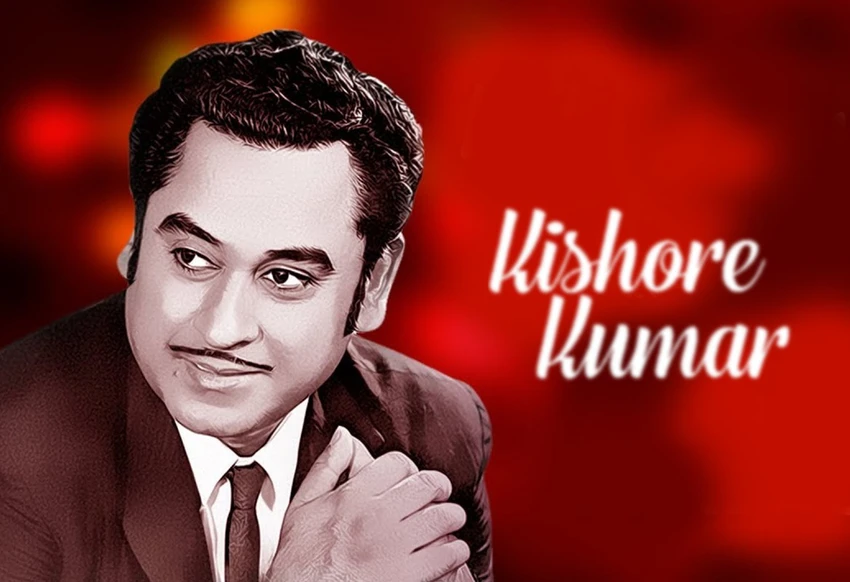Introduction
Imagine a voice so magical it could make you laugh, cry, or fall in love in just one song. That’s the charm of Kishore Kumar, the legendary Bollywood singer whose melodies still echo in our hearts. Known as “Kishore Da” to his fans, he wasn’t just a singer but a superstar who shaped Indian music, movies, and even fashion! In this article, we’ll dive into Kishore Kumar’s incredible life, his unforgettable songs, his quirky style, and why he’s still a household name today. Whether you’re a young music lover or a Bollywood fan, get ready to discover the magic of Kishore Kumar!
About Kishore Kumar: A Musical Genius
Early Life and Background
Kishore Kumar, born Abhas Kumar Ganguly on August 4, 1929, in Khandwa, Madhya Pradesh, grew up in a Bengali family. His father, Kunjilal Ganguly, was a lawyer, and his mother, Gouri Devi, came from a wealthy background. Kishore was the youngest of four siblings, including his famous brother, actor Ashok Kumar. As a kid, Kishore was shy but loved music, often mimicking his idol, K.L. Saigal, a legendary singer of the time. He had no formal music training, but his natural talent shone through early on.
Rise to Fame
Kishore’s journey to stardom began when he moved to Bombay (now Mumbai) to join his brother’s film studio, Bombay Talkies. He started as a chorus singer but got his big break in 1948 with the song “Marne Ki Duayen Kyon Mangu” for the film Ziddi. His big moment came in 1969 with Aradhana, where songs like “Mere Sapnon Ki Rani” and “Roop Tera Mastana” made him a household name. From there, Kishore became the voice of Bollywood’s biggest stars, like Rajesh Khanna and Dev Anand.
Kishore Kumar’s Musical Journey
Notable Songs and Hits
Kishore Kumar’s voice was like a Swiss Army knife—versatile and perfect for any mood! He sang over 2,600 songs in Hindi and other Indian languages like Bengali, Marathi, and Urdu. Some of his biggest hits include:
- “Roop Tera Mastana” (Aradhana, 1969): A romantic classic that won him his first Filmfare Award.
- “Yeh Sham Mastani” (Kati Patang, 1971): A soulful love song that’s still a favorite.
- “Pal Pal Dil Ke Paas” (Blackmail, 1973): A timeless romantic track.
- “Mere Sapnon Ki Rani” (Aradhana, 1969): A peppy number that defined Bollywood romance.
Here’s a quick comparison of some of his iconic songs:
| Song | Film | Year | Why It’s Special |
|---|---|---|---|
| Roop Tera Mastana | Aradhana | 1969 | Romantic, soulful, won Kishore his first Filmfare |
| Yeh Sham Mastani | Kati Patang | 1971 | Captures love’s magic, iconic melody |
| Pal Pal Dil Ke Paas | Blackmail | 1973 | Emotional, timeless love song |
| Chingari Koi Bhadke | Amar Prem | 1972 | Deeply emotional, showcases his versatility |
Unique Singing Style
What made Kishore special? His voice could switch from playful to heartfelt in seconds. He was famous for yodeling, a technique he learned from his brother Anoop’s Austrian records. This made songs like “Zindagi Ek Safar” (Andaz, 1971) super fun! He also molded his voice to match the actor on screen, making stars like Rajesh Khanna and Amitabh Bachchan sound larger than life.
Impact Across Generations
Kishore’s songs are evergreen. From 70s Bollywood to today’s Spotify playlists, his music connects with everyone. Singers like Arijit Singh and Shreya Ghoshal call him their inspiration. His songs are remixed in modern films and played at weddings, proving his music never gets old.
Kishore Kumar’s Fashion and Style Evolution
Signature Looks
Kishore Kumar wasn’t just a voice; he was a style icon! In films like Padosan (1968), he rocked colorful kurtas, scarves, and funky hats, bringing a playful vibe to Bollywood fashion. His off-screen style was equally quirky—think loose shirts, bell-bottom pants, and oversized sunglasses. He loved mixing traditional Indian outfits with Western trends, creating a unique look that stood out.
Influence on Bollywood and Culture
Kishore’s fashion inspired a generation. His vibrant kurtas and casual coolness became a trend in the 60s and 70s. Young fans copied his style, and designers started blending ethnic and modern elements in their collections. Even today, retro Bollywood fashion, like printed shirts and flared pants, draws from Kishore’s iconic looks. His carefree style reflected his personality—fun, bold, and unapologetic.
Kishore Kumar as an Actor and Entertainer
Acting Career and Comic Timing
Kishore wasn’t just a singer; he was a talented actor with a knack for comedy. He starred in films like Chalti Ka Naam Gaadi (1958) and Padosan (1968), where his hilarious expressions and perfect timing stole the show. In Padosan, he played a quirky music teacher, making audiences laugh with his antics. He acted in over 80 films, often blending music and humor.
Notable Films
Some of Kishore’s must-watch movies include:
- Chalti Ka Naam Gaadi (1958): A comedy classic with his brothers Ashok and Anoop.
- Padosan (1968): A laugh-riot where he shines as a singer-actor.
- Half Ticket (1962): A fun film showcasing his playful side.
His acting added a new layer to his fame, proving he was a true entertainer.
Kishore Kumar’s Legacy and Impact on Bollywood Music
Influence on Modern Artists
Kishore’s influence is everywhere. Singers like Kumar Sanu, Mohit Chauhan, and Arijit Singh have said they grew up idolizing him. His ability to convey emotions inspired a new generation of playback singers. Even cricketers like Sachin Tendulkar are fans, with his songs part of their daily routines
Tributes and Covers
Kishore’s music lives on through tributes like the musical comedy Jhumroo (2012) and TV shows like K for Kishore. His songs are remixed in films like Dilwale (2015) and used in ads for brands like Coca-Cola. A statue in Kolkata and a memorial in Khandwa keep his legacy alive.
Kishore Kumar in Popular Culture Today
Why He’s Still Relevant
Kishore’s music is timeless because it speaks to every emotion—love, joy, sadness. Millennials and Gen Z stream his songs on Spotify, where he has over 12 million monthly listeners. His music is featured in movies, ads, and even fashion shows, proving he’s still a cultural icon.
Modern Usage
From remixes in Bollywood films to retro-themed fashion events, Kishore’s influence is strong. His song “Pal Pal Dil Ke Paas” was reimagined in a 2019 film, and brands use his music to evoke nostalgia. Fashion designers draw from his 70s style for retro collections, showing his impact beyond music.
Kishore Kumar: A Fashion Icon?
Wardrobe Choices
Kishore’s wardrobe was as vibrant as his personality. He loved bright kurtas, flared pants, and quirky accessories like scarves and hats. In Jhumroo (1961), his colorful outfits matched his energetic songs. Off-screen, he kept it casual with loose shirts and funky glasses, setting trends in the 70s.
Fashion Trends Inspired by Him
Kishore’s style inspired Bollywood’s retro fashion wave. Today, designers create kurtas and jackets with bold prints, echoing his vibe. Online stores sell “Kishore Kumar-inspired” clothing, like printed shirts and scarves, showing his lasting fashion influence.
Interesting Facts about Kishore Kumar
Here are some fun and lesser-known facts about Kishore Da:
- Yodeling King: He popularized yodeling in Bollywood, inspired by Austrian music.
- Loner at Heart: Kishore called trees his “friends” and loved horror movies.
- Four Marriages: He married actresses Ruma Guha Thakurta, Madhubala, Yogeeta Bali, and Leena Chandavarkar.
- Prankster: Once, he did half his makeup because a director paid him only half his fee
- Record Holder: He won 8 Filmfare Awards for Best Male Playback Singer, a record still unbroken.
- Unreleased Song: His song “Tum hi to woh ho” sold for Rs 15.6 lakh at an auction in 2012.
Kishore Kumar’s Enduring Legacy
What We Can Learn
Kishore taught us to follow our passions and be ourselves. His quirky personality, bold style, and soulful voice show that authenticity wins hearts. He proved you don’t need formal training to shine—just talent and heart.
Lasting Influence
Kishore’s music and style continue to inspire. From Spotify playlists to fashion runways, his legacy is unstoppable. His songs remind us of love, laughter, and life’s simple joys, making him a true legend.
Buying Guide: Celebrate Kishore Kumar’s Legacy
Want to bring a piece of Kishore Kumar into your life? Here’s a guide to the best Kishore Kumar-related products:
Music Albums and Vinyls
- Product: Kishore Kumar Top 100 (Spotify/Amazon Music)
- Description: A curated playlist of his best songs, from “Roop Tera Mastana” to “Pal Pal Dil Ke Paas.”
- Price: Free on Spotify with ads; $9.99/month for Amazon Music.
- Where to Buy: Spotify, Amazon Music.
- Product: Kishore Kumar Vinyl Records
- Description: Collectible vinyls of albums like Aradhana or Kati Patang.
- Price: $20–$50.
- Where to Buy: Amazon, eBay, local record stores.
DVDs and Blu-rays
- Product: Padosan (1968) DVD
- Description: Watch Kishore’s hilarious performance as a music teacher.
- Price: $10–$15.
- Where to Buy: Amazon, Flipkart.
- Product: Chalti Ka Naam Gaadi (1958) Blu-ray
- Description: A comedy classic featuring Kishore and his brothers.
- Price: $15–$25.
- Where to Buy: Amazon, local DVD stores.
Fashion and Merchandise
- Product: Kishore Kumar-Inspired Retro Kurta
- Description: Colorful kurtas with bold prints, inspired by his 70s style.
- Price: $15–$30.
- Where to Buy: Myntra, Etsy, local boutiques.
- Product: Kishore Kumar T-Shirts
- Description: Graphic tees with his song lyrics or images.
- Price: $10–$20.
- Where to Buy: Redbubble, Amazon.
Tips for Choosing
- For Music Lovers: Go for vinyls or streaming playlists for the best audio experience.
- For Movie Buffs: Pick DVDs of Padosan or Half Ticket for a fun movie night.
- For Fashion Fans: Choose retro kurtas or scarves to channel Kishore’s quirky style.
- Budget-Friendly: Start with free Spotify playlists or affordable T-shirts.


